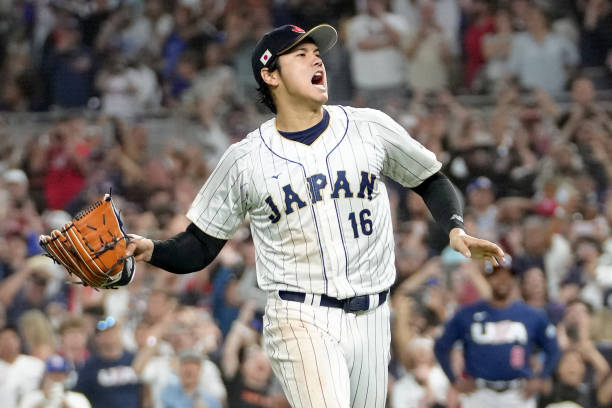Those familiar with Major League Baseball in recent years recognize Shohei Ohtani as a unique talent, a once-in-a-generation player. In just his first six games with the Los Angeles Dodgers, Ohtani has already made history by setting a new team record. During Sunday Night Baseball, Ohtani blasted a double with an exit velocity of 115.8 miles per hour, marking a team record for a base hit in the StatCast era. StatCast, an automated tool introduced to track advanced statistics and metrics, was adopted by the league in 2015. How does this hit compare to other powerful shots since then?
Ohtani’s double ranks as the second-hardest hit ball in Dodgers history since the implementation of StatCast. The hardest-hit ball was a groundout by Yasiel Puig, clocking in at 116 miles per hour on April 4th, 2017, according to Sarah Langs of MLB.com. “Exit velocity,” the technical term for the speed of the ball off the bat, is a key focus for hitters in today’s game. Higher exit velocity makes it more challenging for defenses to field the ball.
Analyzing the hardest-hit balls since 2015, it’s no surprise that the list features some of the MLB’s top players, as noted by Baseball Savant. Oneil Cruz of the Pittsburgh Pirates holds the record with a 122.4 mile-per-hour single off the outfield wall in 2022. Players like Ronald Acuna Jr., Elly De La Cruz, and Aaron Judge also rank among the exit velocity leaders in recent years.
Interestingly, Ohtani’s double on Sunday wasn’t even the hardest hit of his career. On April 10th, 2022, while playing for the Los Angeles Angels, Ohtani smashed a ground-rule double at 119.1 miles per hour. Thus, the Japanese star holds the exit velocity record for two different teams. Despite being sidelined from pitching in 2024 due to Tommy John surgery recovery, Ohtani remains one of the most impactful players in the league. He has earned praise from numerous opponents, including being hailed as the MLB’s top player by Ronald Acuna Jr.

